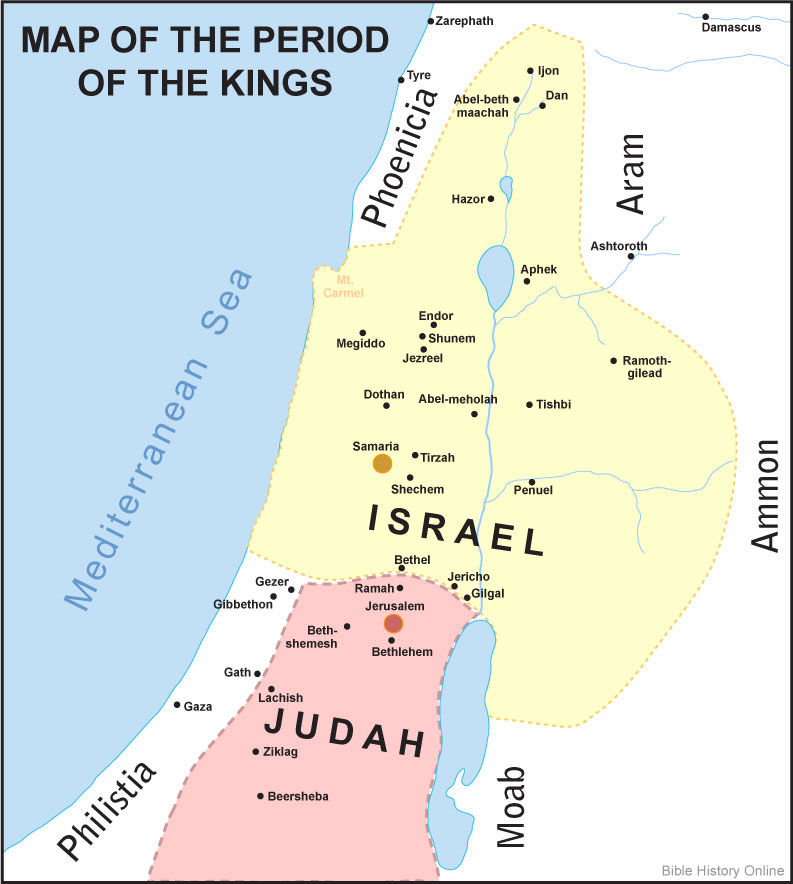The Jews in the 1st Century: A Fractured Nation
- Syed Nasser

- Aug 26, 2017
- 4 min read
Who are the Jewish peoples? From where did the name "Israel" come and what relevance did it have in Jesus' time? A thorough understanding of the religious and historical stage of the 1st century CE is essential to understand the milieu into which Jesus made his appearance, and to understand the nature of his claims as set out in the Bible.
Twelve Tribes of Israel
God named Jacob, Israel,[1] and he had twelve sons that gave rise to twelve tribes, i.e. the Israelites. Under Shalmaneser V in 722 BCE, the Assyrians conquered the northern kingdom of Israel and took them East into captivity. These became the Lost Ten Tribes of Israel. Cyrus, the Persian Emperor-Prophet released these tribes, of which only a remnant, i.e. a fraction returned to Judah.[2]
The tribe of Judah split from the other Israelite tribes. It was later joined by the tribe of Benjamin from which Paul was descended. These two tribes were the southern kingdom of Judah, situated in and around Jerusalem. It is principally (but not entirely) from the tribe of Judah that all Jews today are descended.
"This name of "Israel" was not given to all the twelve tribes, which sprang from his twelve sons. It was only bestowed upon these two sons of Joseph in particular."
To understand the significance of the name "Israel", we must realise that Jacob blessed and gave this name of his only to the sons of Joseph,[3] Ephraim and Manasseh, indicating that they were his true heirs. This name of "Israel" was not given to all the twelve tribes, which sprang from his twelve sons. It was only bestowed upon these two sons of Joseph in particular. Hence, their northern kingdom was called Israel. Both the Houses of Israel and Judah were separate and distinct.[4] Israel as compared to Judah was about 85% of Jacob’s descendants.

This map, courtesy of Bible History Online, shows the relative size of the two kingdoms of Israel and Judah. Often at war with each other, the kingdom of Israel was significantly larger and more powerful than the kingdom of Judah.
Jews—A Fractured Nation
The term Jew related to the nationality of the Kingdom of Judah, and not to the ten tribes. In the second century BCE, the Judeans were spread over the Hellenic Empire centred in Egypt, and as Greek was the commercial language, it soon became the dominant language among the Jews. Most Jews were spread through the Middle East even before the conquest of Alexander the Great. The Roman Empire replaced the Hellenic Empire, and the religion of the Jews within it was Judaism.
"At Jesus’ advent, the Israelites were a fractured people, with Judah completely separate and out of contact with the Lost Ten Tribes of Israel."
At Jesus’ advent, the Israelites were a fractured people, with Judah completely separate and out of contact with the Lost Ten Tribes of Israel. The Judeans, (the people of Judah), were further divided by their beliefs and social customs due to the growth of numerous religious sects. We may gauge the religious divisions of the Judeans by the fact that it took the agreement of seventy-two learned scholars[5] and divines, (each from their respective sects), to arrive at an acceptable Koine Greek translation of the Hebrew scriptures. [6] This was called the Septuagint which literally means "derived from seventy" and therefore not surprisingly, it is also called LXX (Roman for "seventy"). Short texts of the Septuagint have been found, but its longer version was the source for the Old Testament used by present day Christians and Jews in the Jesus Era. Both Jesus and Paul accepted it as canon. [7]
In short, the Israelites were split into two groups: the lost ten tribes of Israel, and the two tribes of Judah. The numerous sects of Judah were constituted under two overall groups. The vast majority were under the Pharisees, but the Sanhedrin Chief Priest was of the Sadducees, who were about ten percent of the wealthier upper class. The Essenes, to whom we shall revisit in a separate article, were a tiny minority.[8]
It was into this religious and historical environment that Jesus made his appearance claiming to be one of three expected prophets. He was a Kohen from the tribe of Judah, through his mother's lineage; something we discuss in detail in coming articles.
REFERENCES
[1]Genesis 35:10 KJV And God said unto him, Thy name is Jacob: thy name shall not be called any more Jacob, but Israel shall be thy name: and he called his name Israel.
[2]Isa 10:22 KJV For though thy people Israel be as the sand of the sea, [yet] a remnant of them shall return: the consumption decreed shall overflow with righteousness.
[3]Genesis 48 KJV 16 The Angel which redeemed me from all evil, bless the lads; and let my name be named on them [Ephraim and Manasseh], and the name of my fathers Abraham and Isaac; and let them grow into a multitude in the midst of the earth.
[4]See: Ezek 37, 1Kings 12, Jer. 3:6-11, Ps 114:1-2, Zec. 11:7-14, 1Chron 5:1-2,17
[5]Josephus paraphrased what is currently known as the Letter of Aristeas to Philocrates in the second century BCE. It recounts how the Hebrew scripture was translated into Greek by seventy-two scholars sent to Egypt from Jerusalem. The product was the Septuagint.
[6]An odd number—probably representing the total number of religious sects; Philo of Alexandria said that six scholars from each of the 12 tribes of Israel were chosen but this is absurd given that 10 tribes were lost and only 2 tribes were within the Hellenic Empire.
[7]Mat 4:7 KJV Jesus said unto him, It is written again, Thou shalt not tempt the Lord thy God.
1Cor 9:9 KJV For it is written in the law of Moses, Thou shalt not muzzle the mouth of the ox that treadeth out the corn. Doth God take care for oxen?
[8]The Essenes were a numerically insignificant minority group, and there are some indications that Jesus originally belonged to this group.

























Comments